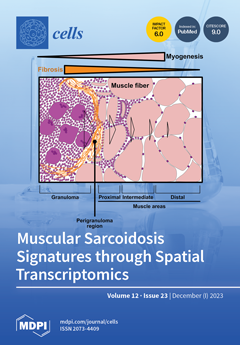Explaining changes at the gene level that occur during neurodegeneration in the CA3 area is crucial from the point of view of memory impairment and the development of post-ischemic dementia. An ischemic model of Alzheimer’s disease was used to evaluate changes in the expression of genes related to amyloid transport in the CA3 region of the hippocampus after 10 min of brain ischemia with survival of 2, 7 and 30 days and 12, 18 and 24 months. The quantitative reverse transcriptase PCR assay revealed that the expression of the
LRP1 and
RAGE genes involved in amyloid transport was dysregulated from 2 days to 24 months post-ischemia in the CA3 area of the hippocampus.
LRP1 gene expression 2 and 7 days after ischemia was below control values. However, its expression from day 30 to 24 months, survival after an ischemic episode was above control values.
RAGE gene expression 2 days after ischemia was below control values, reaching a maximum increase 7 and 30 days post-ischemia. Then, after 12, 18 and 24 months, it was again below the control values. The data indicate that in the CA3 area of the hippocampus, an episode of brain ischemia causes the increased expression of the
RAGE gene for 7–30 days during the acute phase and that of
LRP1 from 1 to 24 months after ischemia during the chronic stage. In other words, in the early post-ischemic stage, the expression of the gene that transport amyloid to the brain increases (7–30 days). Conversely, in the late post-ischemic stage, amyloid scavenging/cleaning gene activity increases, reducing and/or preventing further neuronal damage or facilitating the healing of damaged sites. This is how the new phenomenon of pyramidal neuronal damage in the CA3 area after ischemia is defined. In summary, post-ischemic modification of the
LRP1 and
RAGE genes is useful in the study of the ischemic pathways and molecular factors involved in the development of Alzheimer’s disease.
Full article






